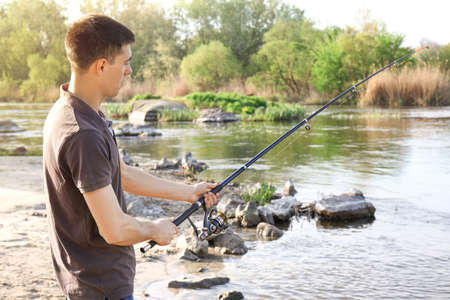1. Introduction: Beyond the Price Tag
When it comes to fly fishing in the UK, there’s more to choosing your kit than simply checking the price tag. While cost can be a practical consideration, British fly anglers are increasingly looking beyond mere pounds and pence, seeking out equipment that reflects not just good value, but also performance, craftsmanship, and that subtle connection to water and wild places. In recent years, conversations on the banks of the Test or along the Dee aren’t just about who has the most expensive rod—they’re about which reel balances best with a favourite line, or which waders keep you dry through a Cumbrian downpour. As fly fishing continues to evolve on these isles, understanding what truly matters in gear selection becomes all the more important. This article sets out to explore why discerning anglers now weigh up a spectrum of factors—quality, durability, heritage, and even sustainability—alongside cost when choosing their tackle. We’ll delve into what ‘value’ really means for today’s British fly fisher and lay the groundwork for a deeper look at how performance and personal preference are shaping kit choices across our rivers and lakes.
Understanding Value: What Matters Most to UK Anglers?
For British fly fishers, the conversation about value goes well beyond the price tag. The discerning angler on these isles weighs up a host of qualities before committing to new kit. Its not simply about what’s cheapest or flashiest—its about finding gear that aligns with personal principles and practical demands alike. But what exactly are the aspects that define value for UK anglers?
Durability: Built to Last Through British Weather
Ask any seasoned fly fisher along the banks of the Tweed or the Test, and you’ll hear tales of rods and reels handed down through generations. Durability is prized—gear needs to withstand everything from Highland squalls to brambly riverbanks. British anglers look for robust construction and materials that promise years of reliable performance.
Sustainability: Conscious Choices for Wild Waters
The British countryside inspires reverence for nature, so sustainability has become a watchword among many local anglers. Eco-friendly manufacturing, responsible sourcing of materials, and minimal packaging all carry weight when selecting equipment. In an era where protecting wild fisheries matters more than ever, sustainable choices resonate with anglers who want their pastime to have a positive legacy.
Craftsmanship & Brand Heritage: Trust in Tradition
Britain has a proud heritage of tackle-making, with names like Hardy and Greys evoking images of hand-finished reels and finely balanced rods. Craftsmanship remains central to perceived value—many anglers are willing to invest in brands with longstanding reputations for quality and meticulous attention to detail.
What Do UK Anglers Prioritise?
| Factor | Importance to UK Anglers |
|---|---|
| Durability | Very High |
| Sustainability | Increasingly Important |
| Craftsmanship | Highly Valued |
| Brand Heritage | Trusted by Many |
| Price Alone | Rarely the Deciding Factor |
The Verdict: Value Is Nuanced
Ultimately, for UK fly fishers, value is a blend of tangible performance and intangible ethos. Whether stalking trout on chalk streams or casting into Scottish lochs, they seek gear that reflects their appreciation for tradition, care for nature, and expectation of enduring reliability—qualities that can’t always be measured in pounds alone.

3. Performance on the Water: Gear that Matches British Conditions
When it comes to fly fishing in the UK, performance is not just about casting distance or smooth retrieval—it’s about how your gear responds to the idiosyncrasies of British waters. Rivers like the Test and the Dee, highland lochs battered by sudden gusts, and placid lakes shrouded in morning mist all demand equipment that can handle variety and unpredictability. While price often suggests quality, anglers quickly learn that only gear with the right balance of finesse and resilience truly shines on local waters.
Understanding British Rivers and Lochs
The UK’s waterways are a patchwork of crystal-clear chalk streams, peaty lochs, and fast-flowing upland rivers. Each environment presents its own set of challenges—think subtle takes from wild brown trout in gin-clear Hampshire waters or battling wind-whipped waves on a Scottish loch. Fly rods need to offer both delicacy for gentle presentation and backbone for controlling larger fish or coping with turbulent water. A rod that feels perfect on a calm day at Rutland Water may struggle to deliver tight loops when faced with a stiff Welsh breeze.
Matching Reels to Local Demands
Beneath the surface, the choice of reel becomes more than an afterthought. The classic click-and-pawl design still has its devotees for small stream fishing, but modern sealed-drag reels provide confidence when tackling hard-running salmon or pike in bigger waters. Durability matters too; reels must stand up to frequent wetting, the odd knock against riverbank stones, and even the persistent British drizzle—a true test for any finish.
The Right Line for Unpredictable Weather
No discussion of performance would be complete without mentioning fly lines. In Britain’s often fickle weather, a floating line with a supple coating resists coiling on cold mornings and still shoots smoothly during an unexpected heatwave. Taper choices matter as well: longer heads allow for delicate presentations under overhanging willows, while aggressive tapers help punch through headwinds across open fens or estuaries.
Ultimately, while higher-priced gear may promise certain features, real value comes from kit that stands up to Britain’s distinct angling environments—balancing tradition with innovation and always ready for whatever weather rolls in next.
4. The Real Cost: Budget vs. Investment Pieces
When it comes to fly fishing gear, British anglers often find themselves weighing the merits of affordable starter sets against the allure of premium, investment-grade equipment. While price is an obvious factor, the long-term value and impact on skill development are equally crucial. Let’s break down how each option stacks up in terms of satisfaction and growth as a fly fisher.
| Budget Starter Sets | Premium Investment Gear | |
|---|---|---|
| Initial Outlay | Low – accessible for newcomers or those watching their pennies | High – can be a considerable upfront cost |
| Durability & Build Quality | Often basic materials; may show wear sooner | Built to last; quality components that age gracefully |
| User Experience | Sufficient for casual outings, but can feel limiting with time | Enhanced precision, comfort, and responsiveness on the water |
| Potential for Skill Development | Might restrict progress as casting techniques advance | Facilitates learning finer techniques, supporting progression from novice to expert |
| Long-Term Satisfaction | Can lead to upgrade itch after initial enthusiasm wanes | A sense of pride and lasting contentment with well-chosen kit |
| Resale Value/Heritage Appeal | Limited resale value; rarely sought after second-hand | Often retains value or even becomes collectible—an heirloom in the making |
The real question isn’t simply about price, but about what you want your angling journey to look like. Budget sets make it easy to dip a toe in British rivers without breaking the bank, but may become a source of frustration as skills develop. Conversely, investing in top-tier gear can be daunting at first, yet pays dividends over countless mornings on the Test or Tweed. In short, consider not just what you pay today, but how your choice will shape tomorrow’s experience and enjoyment by the water’s edge.
5. Influence of Local Culture and Community
When it comes to fly fishing in the UK, the influence of local culture and community cannot be overstated. The traditions embedded within historic angling clubs along the chalk streams of Hampshire or the wild rivers of Scotland shape not only how one fishes but also what gear is considered respectable or essential. Many seasoned anglers will recall advice handed down from fellow club members—often with a wink—that certain brands or models are simply “the done thing” on their waters, regardless of price tag.
Regional quirks also play a pivotal role in shaping perceptions of value and performance. For instance, in Yorkshire’s dales, there is a pride in using locally crafted split-cane rods, prized for their heritage and craftsmanship. In contrast, on the Welsh border, you might find a stronger emphasis on robust, weatherproof kit that stands up to unpredictable conditions. What’s deemed worth spending on often reflects not just practical needs but a sense of belonging and continuity with local angling lore.
The social aspect is equally significant. Membership in a historic fishing club often brings with it an unspoken expectation to uphold certain standards—not just in etiquette but in equipment as well. Investing in quality gear becomes a way to honour these shared values, reinforcing one’s identity within the angling community. It’s not uncommon to see gear choices influenced more by tradition than pure functionality; after all, there’s a certain satisfaction in matching your tackle to the stories told over pints at the village pub after a day on the water.
Ultimately, this communal ethos means that price is rarely considered in isolation. Instead, anglers weigh their purchases against local wisdom and the subtle pressures of community approval. A rod or reel might be technically superior or offer great value for money, but if it doesn’t fit the expectations of your peers or echo the rhythms of your favourite beat, it may never feel quite right.
This intertwining of tradition, regional character, and community standards ensures that gear selection remains a deeply personal choice—one where price is just one thread in a much richer tapestry woven from memory, pride, and shared experience.
6. Conclusion: Finding Your Own Balance
Choosing fly fishing gear is never just about price tags or chasing the latest trend—its about finding the right fit for your personal journey on the water. The British landscape, with its storied rivers and unpredictable weather, calls for kit that matches not only the technical demands of local waters but also your own angling aspirations. Before reaching for your wallet, take a moment to reflect: does this rod suit the chalk streams of Hampshire, or is it overkill for a quiet day on the Yorkshire beck? Think about how you fish—are you after wild brown trout with delicate presentations, or do you crave the power needed for sea trout in a blustery Scottish loch?
Budget will always play its part, but don’t let it overshadow ethics and sustainability. Many UK anglers are now considering the environmental footprint of their gear—opting for brands that support river conservation or favouring long-lasting, repairable equipment over disposable bargains. Its worth weighing whether investing a little more upfront could mean less waste and more satisfaction in the long run.
Ultimately, value is deeply personal. For some, it’s found in heritage craftsmanship—a beautifully finished split cane rod that becomes a family heirloom. For others, it’s in modern materials that offer performance and reliability without fuss. As you make your choice, be honest about your needs and ambitions. Are you building skills and want gear that grows with you? Or is this about a weekend escape, where simplicity matters most?
The best advice is to try before you buy whenever possible—visit your local tackle shop, chat with fellow anglers on the bank, or attend a demo day if you can. There’s no substitute for hands-on experience, especially when every river bend across Britain seems to demand something a little different.
In the end, the real luxury isn’t always in owning top-shelf kit; it’s in feeling confident that your gear will see you through misty dawns and sudden downpours alike. Choose thoughtfully, balancing cost against comfort, conscience, and capability—and let your time on the water be richer for it.


